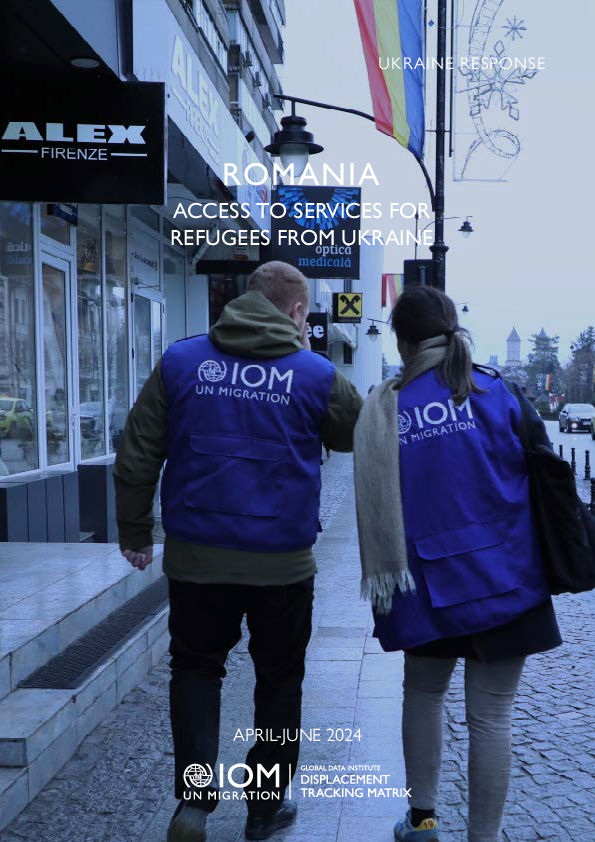-
Countries
-
Data and Analysis
-
Special Focus
-
Crisis Responses
No

Contact
IOM Sierra Leone
Language
English
Location
Sierra Leone
Period Covered
Jun 01 2023
Oct 02 2023
Activity
- Survey
Survey on Profiled Return Migrants
Contact
DTMSudan@iom.int
Location
Sudan
Activity
- Mobility Tracking
- Baseline Assessment
Period Covered
Aug 27 2024 -Sep 10 2024
- An estimated total of 10,878,024 IDPs were displaced to 9,058 locations, in 183 localities, across all 18 states in Sudan.
- An estimated 8,112,654 individuals were displaced internally within Sudan since 15 April 2023.
- An estimated 28 per cent of IDPs who were initially displaced prior to the onset of the current conflict experienced secondary displacement since 15 April 2023.
A more detailed version of this dataset is available, to get access kindly click on the 'Request Access' button
Population Groups
IDPs
Survey Methodology
Unit of Analysis Or Observation
Admin Area 2
Household
Individual
Type of Survey or Assessment
Key Informant
Keywords
Geographical Scope Full Coverage
Administrative boundaries with available data
The current dataset covers the following administrative boundaries

Contact
DTM Europe, DTMMediterranean@iom.int
Language
English
Location
Romania
Period Covered
Apr 01 2024
Jun 30 2024
Activity
- Survey
- Flow Monitoring
IOM’s Displacement Tracking Matrix (DTM) collected data on the needs, intentions, and integration challenges of refugees as part of the Surveys with Refugees in the Ukraine Response Region exercise. From April to June 2024 (Q2), DTM interviewed a total of 248 individuals in Romania. This report presents the findings on access to services that facilitate integration, and needs and assistance.
Key findings:
- Migration status
- 92% EU Temporary protection status
- 8% Other Active population:
- Household (HH) composition
- At least 2 adults and 1 child – 35%
- A single adult and at least 1 child – 19%
- Alone –19%
- At least two adults and no children – 24%
- Other – 3%
- Children
- 69 % - children aged between 5 and 17 years old
- 31% - infants aged between 0 and 4 years old
- Needs
- Financial support (68%)
- Food supply (59%)
- Sanitary products (58%)
- Health services (33%)
- Education for adults (24%)
- Obstacles in accessing healthcare
- Language barrier (28%)
- Cost (23%)
- Long queues (6%)
- Ease of visiting a doctor
- Very difficult (8%)
- Somewhat difficult (27%)
- Neither easy, nor difficult (21%)
- Somewhat easy (13%)
- Very easy (<1%)
- Unknown (33%)

Contact
DTM Sudan; dtmsudan@iom.int
Language
English
Location
Sudan
Period Covered
Aug 27 2024
Sep 10 2024
Activity
- Mobility Tracking
- Baseline Assessment
This report reflects data corresponding to Sudan Mobility Update (6) dataset. The dataset is available here.
Overview:
This report provides an overview of the total population of internally displaced persons (IDPs) in Sudan, including those displaced both before and after the onset of the conflict on 15 April 2023.
Key Findings:
- An estimated total of 10,878,024 IDPs were displaced to 9,058 locations, in 183 localities, across all 18 states in Sudan.
- An estimated 8,112,654 individuals were displaced internally within Sudan since 15 April 2023.
- An estimated 28 per cent of IDPs who were initially displaced prior to the onset of the current conflict experienced secondary displacement since 15 April 2023.
- Approximately 2,344,904 individuals borders into neighbouring countries since 15 April 2023.
- The top states of origin were Khartoum (34%, 3,694,639 IDPs), South Darfur (19%), and North Darfur (14%)
- The highest proportion of IDPs were hosted in South Darfur (17%), North Darfur (14%), and Gedaref (9%) states.
- Over half (52%) of IDPs were reportedly children under the age of 18-years-old.
Annex 1 includes an operational matrix with a table of estimated IDPs per state, disaggregated by displacement before versus after 15 April 2023.
Note: The number of IDPs displaced post 15 April 2023 (8,112,654 IDPs) includes the estimated 1,055,402 IDPs who were initially displaced prior to 15 April 2023 and experienced secondary displacement since 15 April 2023. DTM Sudan defines an internally displaced person as any person who has been forced or obliged to flee from their habitual residence due to an event dating from 2003 onwards.

Contact
DTM Burundi, DTMBurundi@iom.int
Language
English
Location
Burundi
Period Covered
Dec 11 2023
Apr 29 2024
Activity
- Survey
- Community Perception
Ce rapport présente les cartes de niveau colline créées sur la base de l'exercice de cartographie participative des incidents et des solutions liées aux phénomènes climatiques. Au cours de l'exercice de cartographie participative, les enquêteurs ont cartographié 2 520 dommages et 2 311 solutions.
Entre juin 2022 et juin 2024, la Matrice de Suivi des Déplacements (Displacement Tracking Matrix, DTM en anglais) de l’Organisation internationale pour les migrations (OIM) et le Joint IDP Profiling Service (JIPS) a mis en oeuvre et contrôlent le projet financé par ECHO : Dégradation de l’environnement et déplacements : utiliser les données centrées sur les citoyens pour améliorer la programmation humanitaire. Au cours du projet, deux cycles de collecte de données ont été réalisés. Le premier a eu lieu entre le 11 et le 22 décembre 2023 et le second entre le 4 et le 29 avril 2024 dans 6 communes (65 Collines) à travers quatres provinces du Burundi.
Les résultats présentés ici ont été recueillis à l'aide de l'approche d'intelligence collective créée au cours du projet. Pour en savoir plus sur cette approche, consultez l'étude de cas du projet : 'L'utilisation des Méthodes d'Intelligence Collective : Cartographie participative et données générées par les citoyens pour lutter contre la dégradation de l'environnement et les déplacements de population'.
Si vous avez eu l'occasion de lire ou d'utiliser ce rapport, nous vous invitons à répondre à une courte enquête en français (lien ici) ou en anglais (lien ici). Nous apprécions beaucoup votre retour d'information.
Pour obtenir l'accès, veuillez cliquer sur le bouton « Request Access ».

Contact
DTM Somalia, IOMSomaliaDTM@iom.int
Language
English
Location
Somalia
Period Covered
Sep 07 2024
Sep 11 2024
Activity
- Mobility Tracking
- Baseline Assessment
This latest round of Emergency Trends Tracking was initiated in April 2024 to monitor displacements movements during the Gu rainy season. Districts covered in this round include Afgooye, Afmadow, Baardheere, Baidoa, Balcad, Belet Weyne, Belet Xaawo, Cabudwaaq, Dayniile, Dhuusamarreeb, Doolow, Gaalkacyo, Garoowe, Hodan, Jamaame, Jowhar, Kahda, Kismaayo, and Luuq. ETT is a crisis-based tool that tracks sudden displacement triggered by specific events or emerging crises.
The objective of ETT is to help prioritize humanitarian response and to enable partners to deliver rapid assistance. Based on previous shock induced displacement patterns, the humanitarian community expects that people will continue to move toward urban areas in search of humanitarian services. Consequently, the ETT coverage focuses on the main urban centers and surrounding villages for each assessed district. The data is collected through Key Informant Interviews (KIIs) at the location level, from Sunday to Wednesday every week. It includes information on new arrivals, numbers and demographic of IDPs, reasons for displacement, intentions, humanitarian assistance and priority needs among others.
To facilitate the joint analysis of the CCCM (Camp Coordination and Camp Management) Cluster’s New Arrivals Tracker (NAT) and ETT data, the assistance and needs indicators are identical in both tools.
Contact
DTM Yemen, iomyemendtm@iom.int
Location
Yemen
Activity
- Mobility Tracking
- Event Tracking
Period Covered
Sep 08 2024 -Sep 14 2024
From 1 January to 14 September 2024, IOM Yemen DTM tracked 2,633 households (HH) (15,798 Individuals) who experienced displacement at least once.
Between 8 and 14 September 2024, IOM Yemen DTM tracked 86 households (516 individuals) displaced at least once. The majority of people moved into/within the following governorates and districts:
- Lahj (59 HHs) – Al Musaymir (59 HHs) district. All displacements in the governorate were internal.
- Ma’rib (14 HHs) – Ma’rib City (8 HHs), Ma’rib (6 HHs) districts. Most displacements in the governorate originated from Al Hodeidah and Al Mahwit.
- Ta’iz (7 HHs) – Al Maafer (5 HHs), Al Misrakh (2 HHs) districts.. Most displacements in the governorate originated from Ta’iz and Al Hodeidah.
The majority of people moved from the following governorates and districts:
- Lahj (63 HHs) – Al Musaymir (63 HHs) district.
- Al Hodeidah (7 HHs) – Ad Dohi (2 HHs), Al Qanawis (2 HHs), Al Hali (1 HH) districts.
- Ta’iz (7 HHs) – Maqbanah (5 HHs), Mawiyah (1 HH), Al Qahirah (1 HH) districts.
Population Groups
IDPs
Returnee (Previously Internally Displaced)
Survey Methodology
Unit of Analysis Or Observation
Admin Area 2
Household
Type of Survey or Assessment
Household
Key Informant
Keywords
Geographical Scope Partial Coverage
Administrative boundaries with available data
The current dataset covers the following administrative boundaries

Contact
DTM Yemen, iomyemendtm@iom.int
Language
English
Location
Yemen
Period Covered
Sep 08 2024
Sep 14 2024
Activity
- Mobility Tracking
- Event Tracking
IOM Yemen DTM’s Rapid Displacement Tracking (RDT) tool collects data on estimated numbers of households forced to flee on a daily basis from their locations of origin or displacement, allowing for regular reporting of new displacements in terms of estimated numbers, geography, and needs. It also tracks returnees who returned to their location of origin.
From 1 January to 14 September 2024, IOM Yemen DTM tracked 2,633 households (HH) (15,798 Individuals) who experienced displacement at least once.
Between 8 and 14 September 2024, IOM Yemen DTM tracked 86 households (516 individuals) displaced at least once. The majority of people moved into/within the following governorates and districts:
- Lahj (59 HHs) – Al Musaymir (59 HHs) district. All displacements in the governorate were internal.
- Ma’rib (14 HHs) – Ma’rib City (8 HHs), Ma’rib (6 HHs) districts. Most displacements in the governorate originated from Al Hodeidah and Al Mahwit.
- Ta’iz (7 HHs) – Al Maafer (5 HHs), Al Misrakh (2 HHs) districts.. Most displacements in the governorate originated from Ta’iz and Al Hodeidah.
The majority of people moved from the following governorates and districts:
- Lahj (63 HHs) – Al Musaymir (63 HHs) district.
- Al Hodeidah (7 HHs) – Ad Dohi (2 HHs), Al Qanawis (2 HHs), Al Hali (1 HH) districts.
- Ta’iz (7 HHs) – Maqbanah (5 HHs), Mawiyah (1 HH), Al Qahirah (1 HH) districts.
IOM identified 186 additional households displaced in the previous reporting period, which covered 01 - 07 September 2024, in the governorates of Lahj (168 HHs), Al Hodeidah (9 HHs), Ma’rib (7 HHs), and Ta’iz (2 HHs). These figures have been added to the cumulative displacement total recorded since the beginning of the year.

Contact
ropretoriarmdhub@iom.int
Language
English
Location
Malawi
Period Covered
Jul 01 2024
Jul 31 2024
Activity
- Flow Monitoring
- Flow Monitoring Registry
This report is an overview of the data collected from 1 to 31 July 2024 at Mangochi FMP in Malawi along the border with Mozambique. The Flow Monitoring Registry (FMR) collects data at Flow Monitoring Points (FMPs) through direct observation and interviews with key informants, including staff working at transit stations, border patrol officers, local authorities, bus or taxi drivers and travellers themselves. The FMR gathers data on the number of travellers crossing FMPs, as well as the provenance, next destination, vulnerabilities and means of transport of travellers.

Contact
ropretoriarmdhub@iom.int
Language
English
Location
Malawi
Period Covered
Jul 01 2024
Jul 31 2024
Activity
- Flow Monitoring
- Flow Monitoring Registry
This report is an overview of the data collected from 1 to 31 July 2024 at Karonga FMP in Malawi along the border with the United Republic of Tanzania. The Flow Monitoring Registry (FMR) collects data at Flow Monitoring Points (FMPs) through direct observation and interviews with key informants, including staff working at transit stations, border patrol officers, local authorities, bus or taxi drivers and travellers themselves. The FMR gathers data on the number of travellers crossing FMPs, as well as the provenance, next destination, vulnerabilities and means of transport of travellers.
Pagination
- Previous page
- Page 45
- Next page
